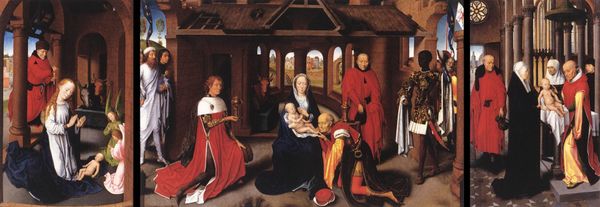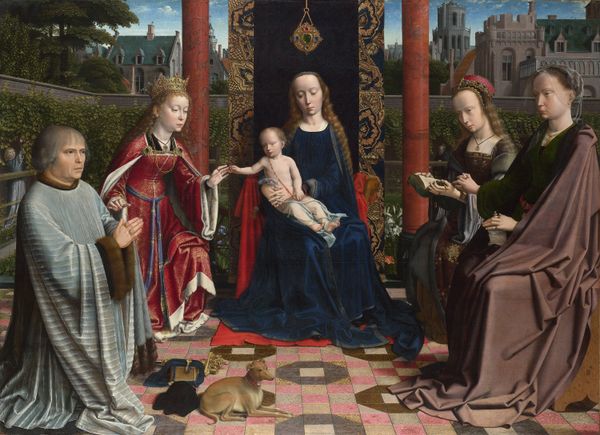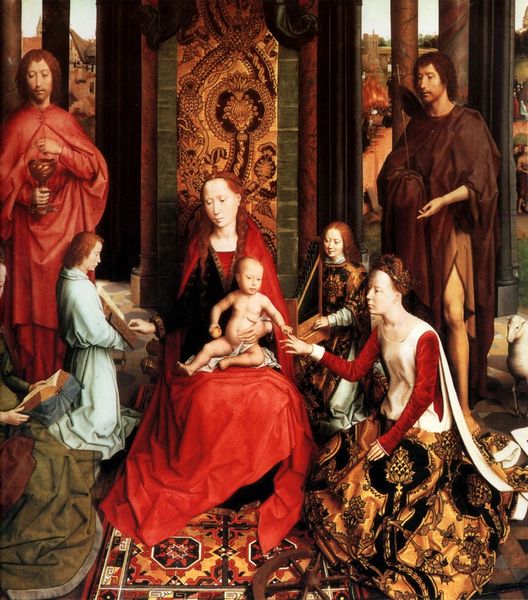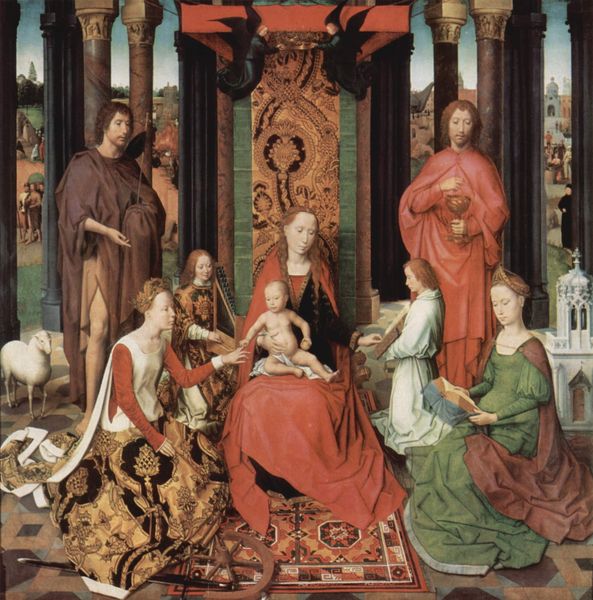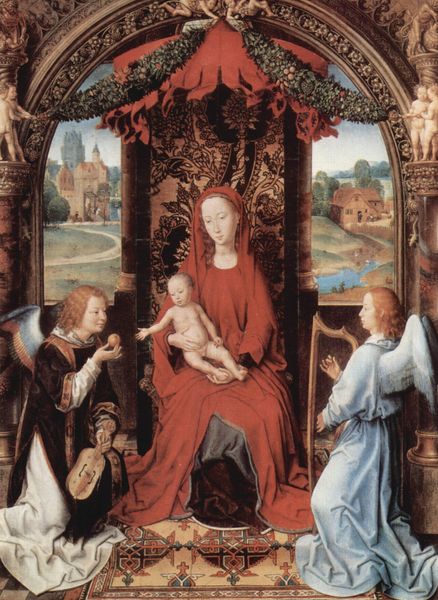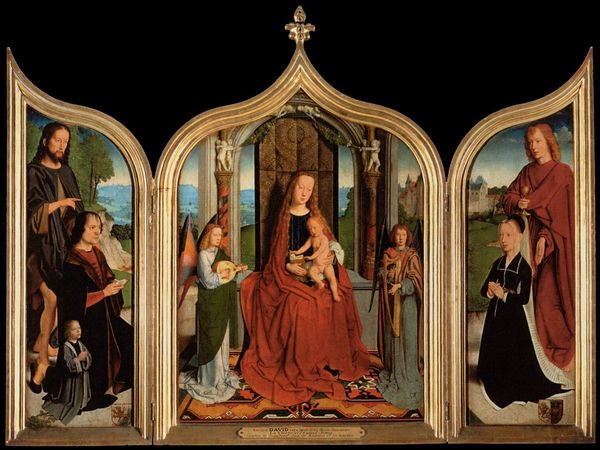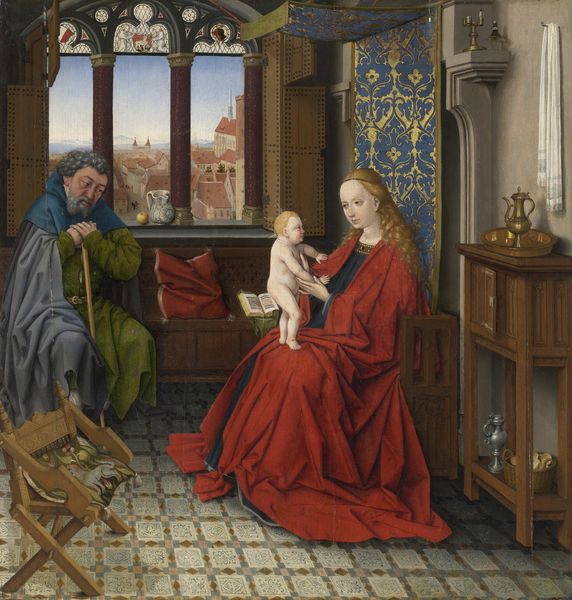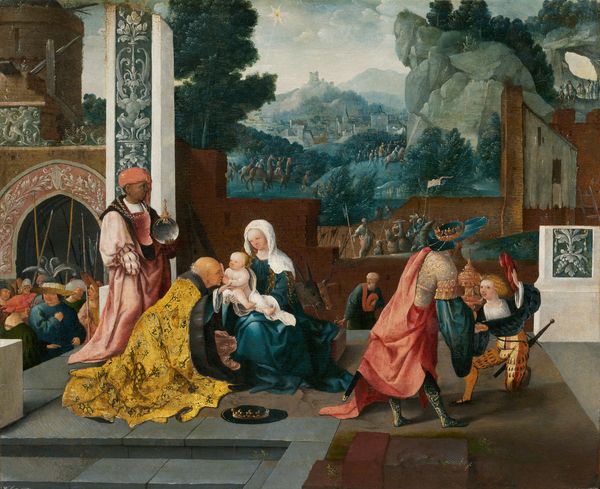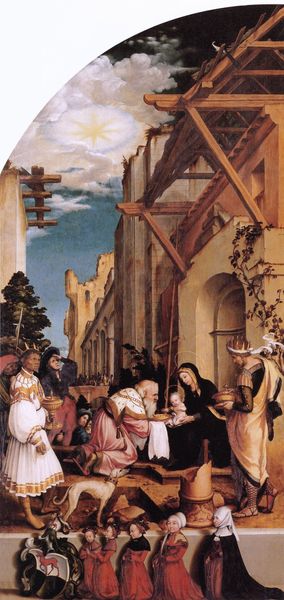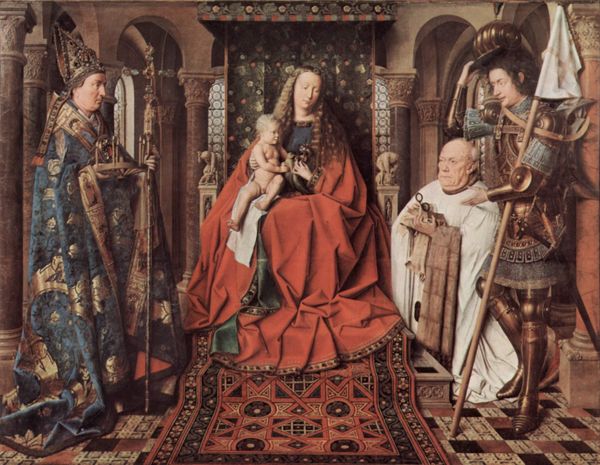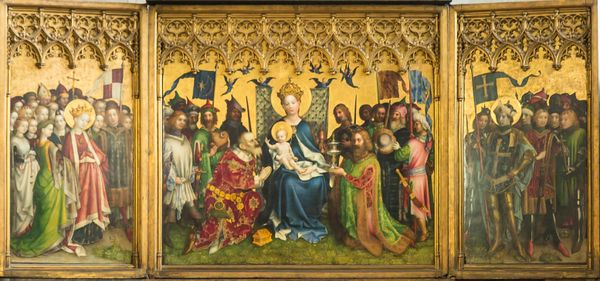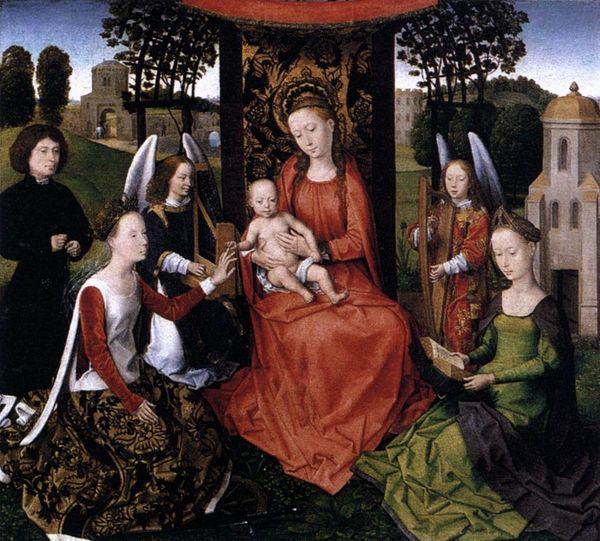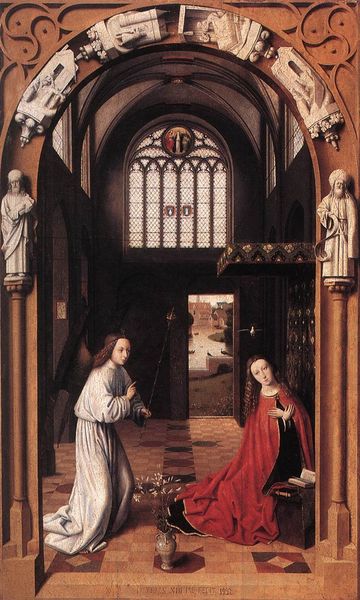
Adoration of the Magi, central panel of the Triptych of the Adoration of the Magi 1472
0:00
0:00
hansmemling
Museo del Prado, Madrid, Spain
painting, oil-paint
#
narrative-art
#
painting
#
oil-paint
#
figuration
#
11_renaissance
#
flemish
#
history-painting
#
early-renaissance
Dimensions: 147.4 x 96.4 cm
Copyright: Public domain
Editor: Here we have Hans Memling’s “Adoration of the Magi,” the central panel of a triptych, painted around 1472. It’s done with oil paints. I am really struck by the almost theatrical staging of this scene. What details stand out to you? Curator: Immediately, the construction of the scene. Notice the ramshackle structure acting as a stage, it’s a deliberate choice to juxtapose the opulence of the figures with this crude construction. The decay visible within the architecture contrasts starkly with the sumptuous textiles and meticulously rendered jewelry. Editor: I see that contrast now! Does that reflect something about the people of that time? Curator: Indeed, this tension speaks volumes about the social landscape of Bruges during Memling’s time. The merchant class was ascendant, but older societal structures and feudal relations persisted. These imported goods of high status are made accessible in paintings like this to a wide viewership. Editor: So, showing this access through oil paint increased their status? Curator: Consider where Memling obtained his pigments, from the availability of precious ultramarine derived from lapis lazuli and the ways it shaped his creative practice to communicate devotion in the most economically powerful terms. Editor: I hadn't thought of that aspect. This artwork seems less about a purely religious moment and more about its intersection with global trade and local economy. It shows the impact of commerce in how people visualized their faith, as displayed by materiality. Curator: Precisely. The real epiphany is realizing that this 'adoration' is just as much about the celebration of material wealth and Memling's own workshop practice to attain social recognition, as much as it is a religious observance. Editor: I will remember that in the future, art doesn’t appear from nowhere, it always has connections to material production and the surrounding culture!
Comments
No comments
Be the first to comment and join the conversation on the ultimate creative platform.
